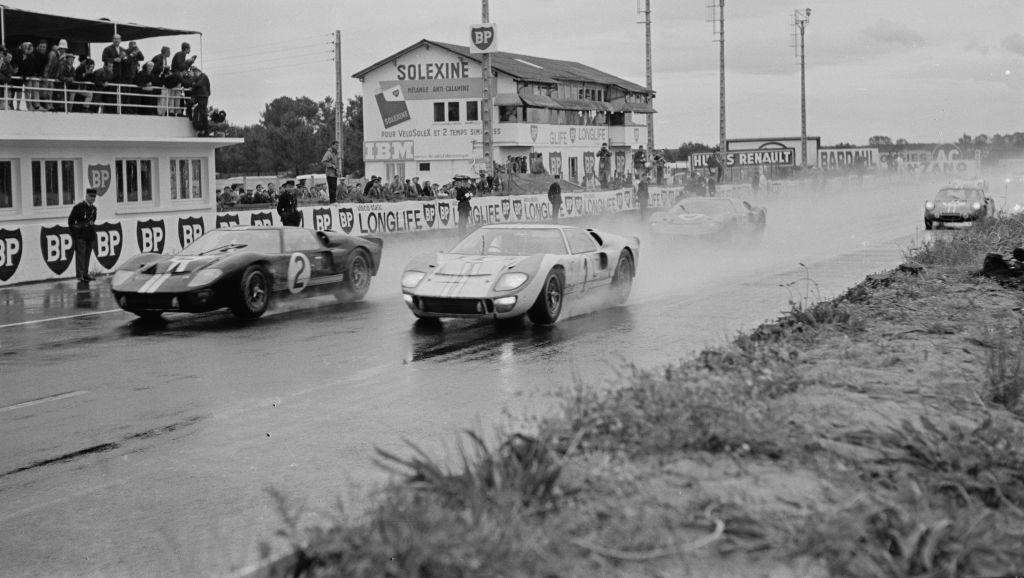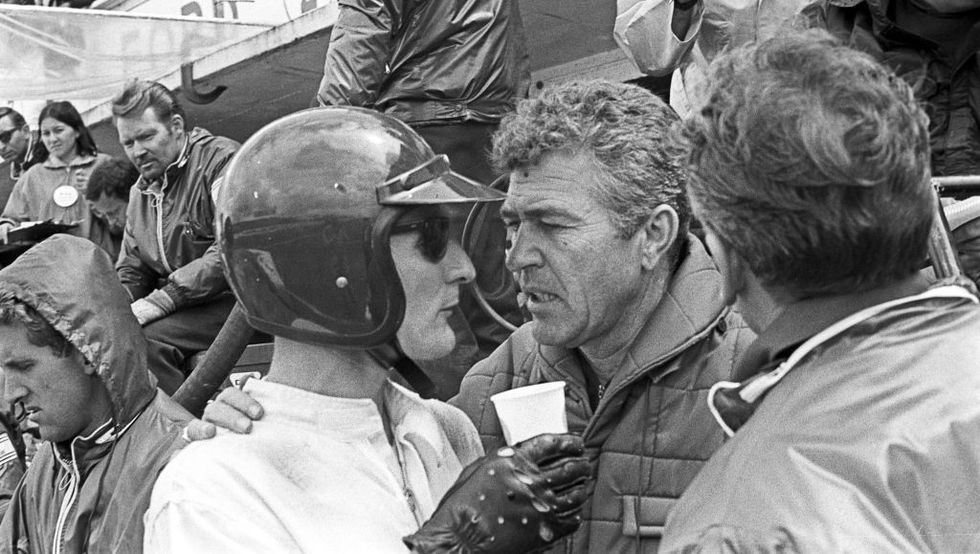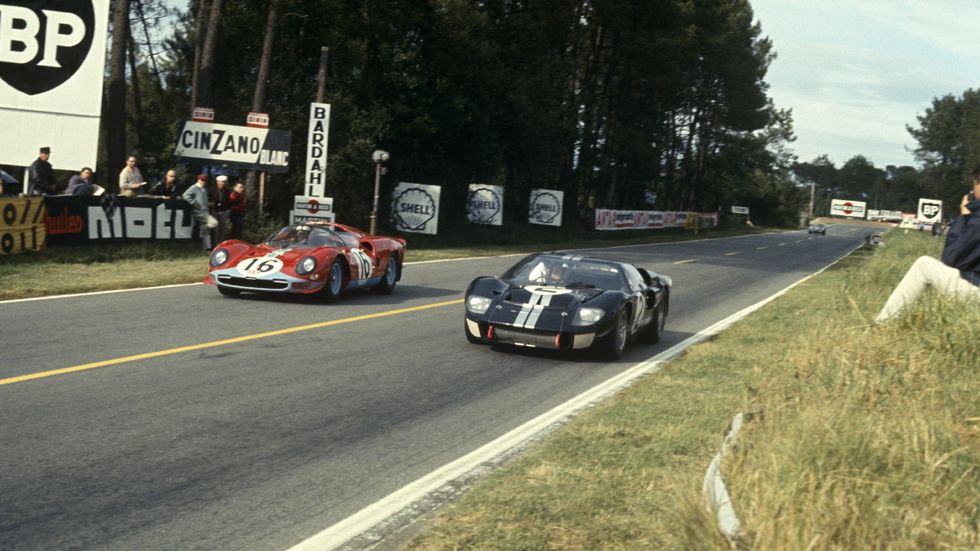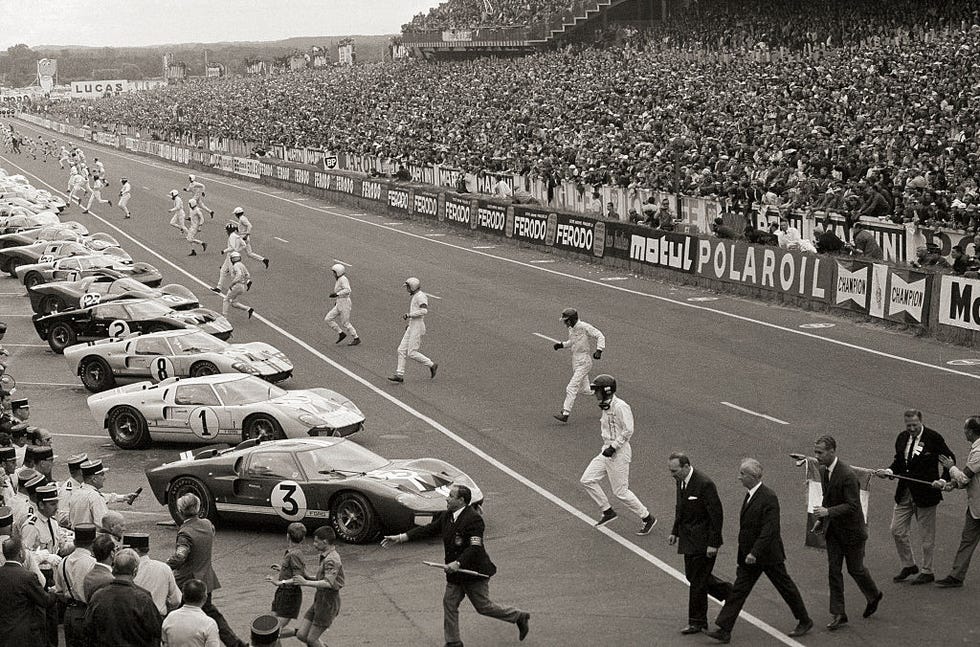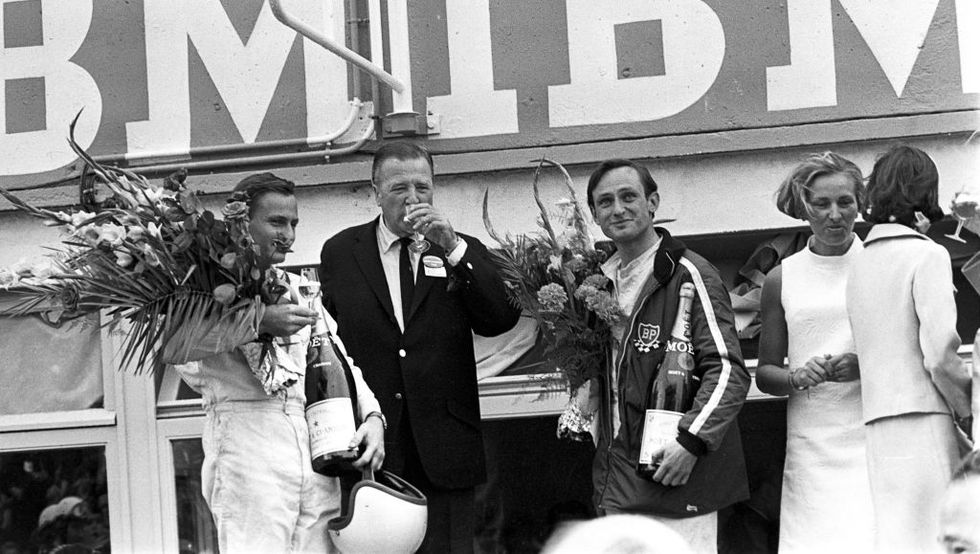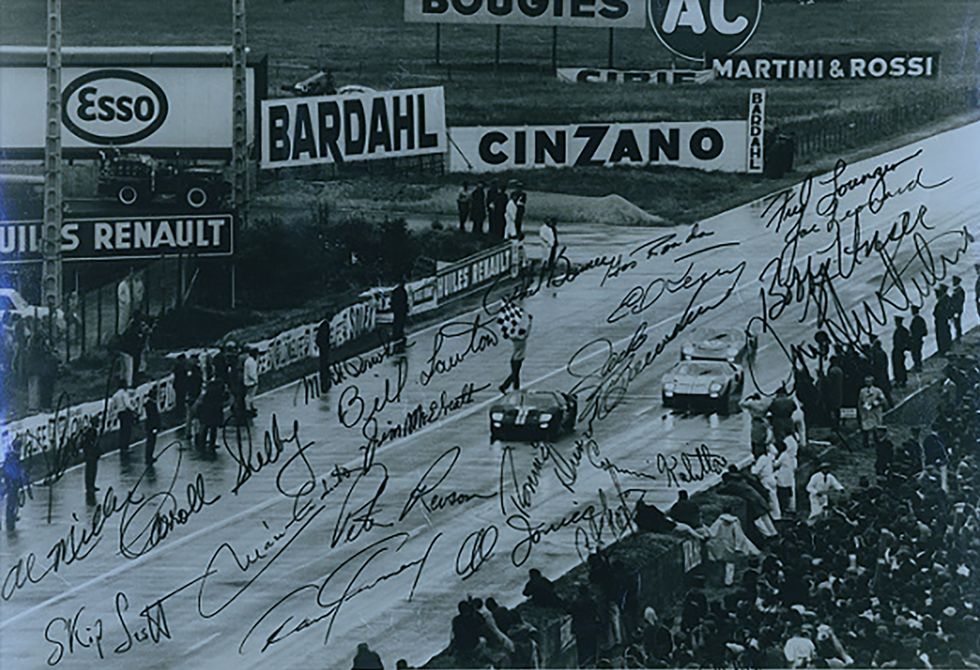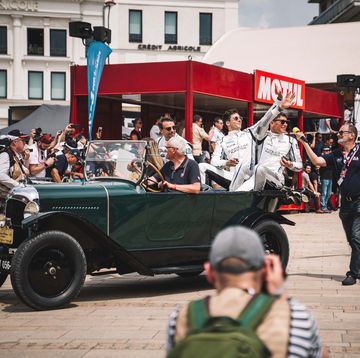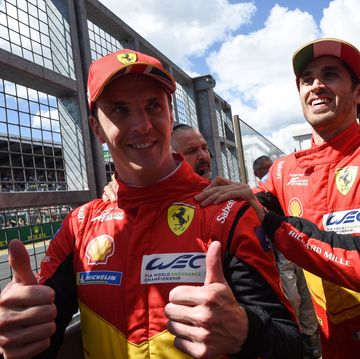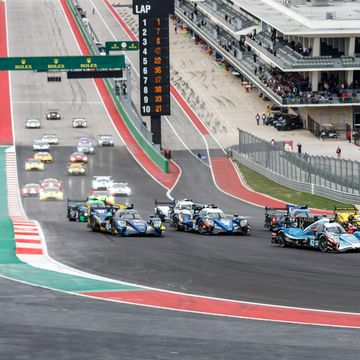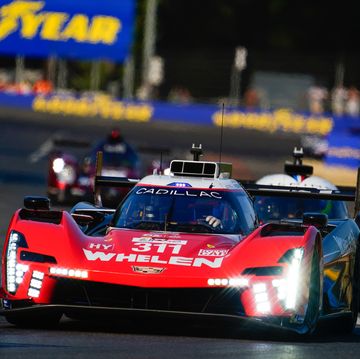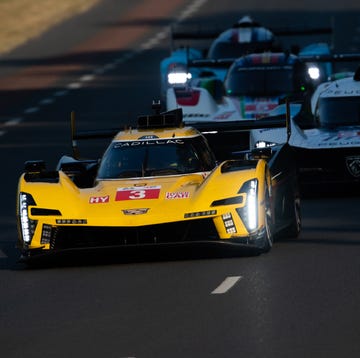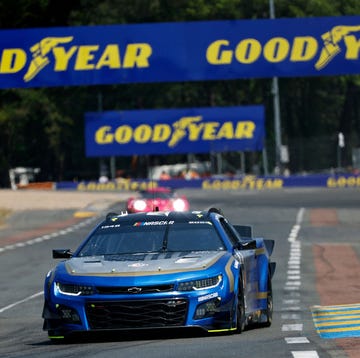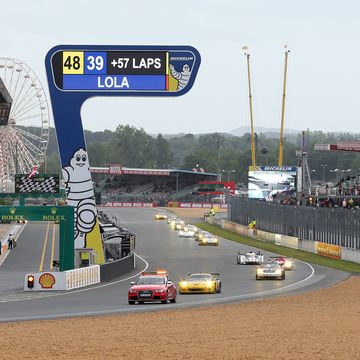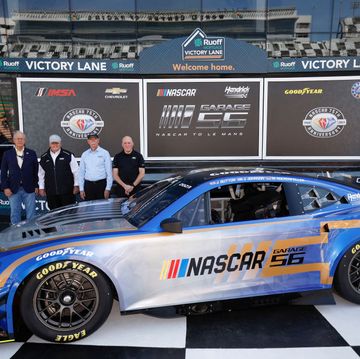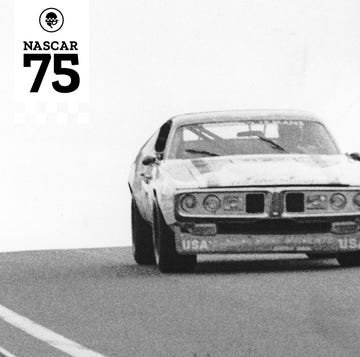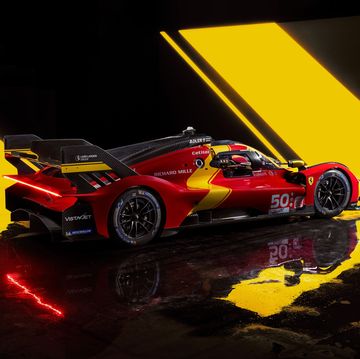- Writer David Phipps of Competition Press & Autoweek likened the Ford effort at the 1966 24 Hours of Le Mans to a “steamroller at work.”
- He also noted the “confusion at the finish when the two remaining Shelby American cars crossed the line almost side by side.”
- The Ford Mk II entries dominated the race, in part due to the mistakes of Enzo Ferrari, who entered just three Ferrari P3 chassis, none of which finished.
In the 100 years of the Le Mans 24 hour, being celebrated with this year’s centenary, no race had a more controversial finish than the first win by Ford in 1966.
What really happened?
David Phipps of Competition Press & Autoweek, Brock Yates of Car and Driver, and Road & Track’s Henry Manney were all veterans of knee-deep-in-the-pits race coverage. To a man, these three observed that Ken Miles got the short end of the stick by Ford’s “formation finish,” a photo opportunity for publicity.
But was there something more nefarious resulting from a personality clash between Miles and Ford executive Leo Beebe as portrayed in Ford v Ferrari by Hollywood?
The winning assault of the Ford camp was “as classically executed as a von Clausewitz campaign,” according to Yates, citing the Prussian military man. But the final hour “left the race blighted with mysterious anti-climax and corporate confusion.”
Phipps likened the Ford effort to a “steamroller at work” and noted the “confusion at the finish when the two remaining Shelby American cars crossed the line almost side by side.”
The Ford GT40 Mk II entries dominated the race, in part due to the mistakes of Enzo Ferrari, who entered just three Ferrari P3 chassis, none of which finished. His team manager, Eugenio Dragoni, compounded the dearth of entries versus a phalanx of eight Mk IIs by not using a “hare” strategy of pushing the pace with one car and allowing the other two P3s to lag for the sake of endurance.
And finally, both Ferrari and Dragoni participated in intramural politics during which John Surtees, Ferrari’s number one driver in F1, was told to give way to reserve driver Ludovico Scarfiotti. As things turned out, Scarfiotti would crash his P3 and Surtees would leave Ferrari’s F1 team in favor of Cooper.
With no threat from Ferrari after the retirement of the P3s, four of the eight Mk IIs entered were running like a train at the front of the field at the end of the 18th hour when the leading car of Dan Gurney and Jerry Grant retired due to a radiator hose that came unclamped.
With six grueling hours to go, the Shelby American Fords of Miles/Denny Hulme and Bruce McLaren/Chris Amon ran a relatively close first and second. The Mk II entered by Holman-Moody of Ronnie Bucknum and Dick Hutcherson was a distant third.
Road & Track’s Manney reported that the rivalry among drivers would result in an occasional “Nelsonian blind eye” turned toward any directives regarding lap times, referring to famed British Admiral Nelson’s loss of sight in one eye. According to on-the-scene reports, several of the Ford drivers had been engaged in one-upping each other’s lap times, including Gurney, Miles, McLaren, Bucknum, and Graham Hill.
Once the Gurney/Grant car went to the sidelines, all the drivers were told to stick to lap times of 4 minutes, which was about 20 seconds slower than the pace the Mk IIs could turn in race trim. (As predicted, their 7.0-liter V8s had enabled the Fords to comfortably outpace the Ferraris on the Mulsanne straight while still sticking with the P3s in the twisty portions of the eight-mile circuit.)
After the directive to slow down was given, it was confirmed that Miles drew notable ire in the Ford pits with a lap of 3 minutes, 38 seconds, which was 22 seconds below the target lap time of four minutes! Miles was told by his team’s commander-in-chief and friend Carroll Shelby that he would be yanked from the race if he tried to sneak in another such lap. Shelby was later quoted by Yates as saying, “I would have given $50,000 to have Ken win.” Miles was also quoted in response to drawing Shelby’s anger. “If you think I’m hard on a car, look at what’s left of Gurney’s.”
Miles, of course, was seeking to become the only man to win the 24 Hours of Daytona, 12 Hours of Sebring, and Le Mans in the same year. But the Ford hierarchy, led by competition chief Beebe, already had a plan in place for a formation finish and a photo of Ford’s dominance, which proved to be problematic. Manney, who spent much of the race in the pits conferring with drivers and crew members, reported that Beebe informed drivers during their final pit stops about the plan for the photo finish.
We all know how the story ends. A dead heat, i.e. a formation finish, resulted in the French officials deciding that the Ford of McLaren/Amon had won due to a faster average speed after covering more distance in the same amount of time. This was due to starting farther down the line (under the old Le Mans start where drivers ran to their cars) after Amon qualified in fourth place behind Miles’ second-place Ford.
Adding to the eventual dismay was the lack of awareness, outside of those reporting from the pits, on why Miles had slowed from a substantial lead over McLaren to allow the latter to catch him in the closing hour, run in a drizzle, for the photo finish. “We were told to finish neck-and-neck and that’s what we did,” said Miles, as quoted by Yates. “If they’d let Bruce and me race for it, we wouldn’t have had all this nonsense.”
Neither TV commentators, subaltern French officials, nor the crowd were expecting McLaren and Amon on the winner’s podium according to all the magazine reports, because the Miles car had been the leader for so long.
As reported by Manney, and as seen in photos, Miles intentionally braked at the finish to let McLaren pass at the checkered flag signifying the finish taken at about 50 mph. It was also suggested that McLaren might have blipped his throttle and gained about three feet.
According to the movie, Beebe played the heavy due to his disdain for Miles and the latter’s unruliness. Yates reported that the Ford hierarchy had communicated with the French officials during the final hour about their dead-heat calculations and how that would result in the car of McLaren/Amon being declared the winner. But the photo finish went on as planned.
One wonders what would have happened if the Gurney/Grant Mk II had continued in the lead. Since Gurney won the pole, the car and its two American drivers would not have been the winners in a “dead heat” formation finish according to the French method.
No one argued about the race needing a single winning car, although many took exception to what was an unsporting finish. “It is puzzling,” wrote Manney.
Yates’ conclusion was typically hyperbolic “Morning light,” wrote Yates, “came with Gurney and Grant well on their way to victory, until cooling trouble ended their fine drive. That left Ken Miles and Bruce McLaren to act out their climatic drama and to send Ford away from Le Mans with the one checkered flag that they had sought with more determination, more poor luck, more frivolous waste, and more exhausting work by a small group of dedicated men than any other single project in the history of automobile racing.”
It was estimated Ford spent $3 million (about $25 million in current dollars) for the privilege of steamrolling Ferrari.
Phipps came closest to summing up the storyline that would later become a very successful Hollywood movie.
There was “outrage at the finish of the race with the organizers awarding McLaren and Amon the victory over Miles/Hulme on the basis of space between the cars as they were lined up for the start,” he wrote in Autoweek & Competition Press. Miles, he continued, “maintained with some justice that this was making it mandatory for any driver who wished to be sure of winning the race with a Le Mans start to start dead last.
“As usual, logic made little difference in the outcome of the decision.”
